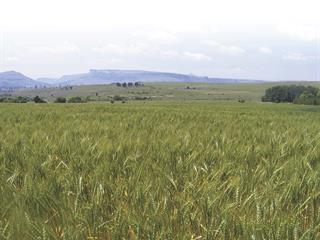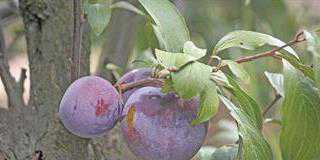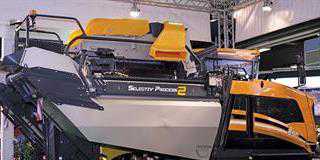
Combine this with high input prices and large carry-over stocks, and the maize industry is at a crossroads. Grain SA says the local market needs only 9,8 million tons, meaning farmers must reduce production by 1 million hectares. Annelie Coleman asks why producers find it so difficult to cut production, and what the alternatives are.
“I’ve thought long and hard about why we keep producing more and more maize,” says Pieter Meyer, a maize producer from Hartbeesfontein in the North West. “I think the new generation of young farmers are optimistic, and the high prices we got two or three years ago are stuck in their heads. “But my advice to these guys is that the economy is cruel and you can easily produce yourself into bankruptcy. The only solution is for every maize producer in this country to cut production by 50%, or we’ll lose half our commercial farmers in the next few years. You’ll still make a profit producing 10t/ha at R800/t. Anyway, if we keep churning out large volumes of maize, where will we keep it? Storage capacity is running out.” Farmers should buy maize at the current low prices instead of producing it, says Jozef du Plessis, chairperson of the Schweizer-Reneke District Agricultural Union. “We make a profit by selling maize for more than it costs to produce. If we can buy it for less than production cost, it makes no sense to produce it. If you usually produce 5 000t, consider buying 2 500t or more and scale down your production.”
The maize can be sold at a better price later, he explains. “If we can balance the 2010/11 season, it could mean three profitable seasons to come. If you sell the current crop at a better price, and next season’s smaller crop fetched a good price, together with the maize you bought, you’ll have two good seasons.” Large areas of marginal land have already been taken out of maize production and at the current low prices, even high potential soils are marginal. All maize producers in the country know what to do, says Grain SA chairperson, Neels Ferreira. “I‘m going to plant less, not because Grain SA says so, but because it makes economic sense.”But if they can’t produce the maize volumes they’re used to, where can farmers find the rest of the income they need? Neels says Grain SA is in talks with government about biofuel production. There are also rotation crops, and Grain SA is negotiating with the Department of Trade and Industry to build up the soya processing industry. And then there’s always the livestock option.“The bottom line is, however, that maize producers must determine their own future,” stresses Neels. “We can’t sit back and wonder what is going to happen next year.”
Beef (and mutton) upPieter is optimistic about producing red meat. “It will keep commercial farmers on their land,” he says. “The Western Transvaal region is ideal for beef, and we can plant forage sorghum on a large scale. I hear the country has a shortage of 46 000t of meat.” Bully Botma, a maize producer from Bothaville, says diversifying into livestock is already well-established in the maize areas. “If it weren’t for the livestock component most of us would be bankrupt by now. Planted pastures suit the Free State’s high-potential sandy soils, but establishing them is expensive and takes time. “We farm mainly with cattle. Sheep aren’t an option because of theft and predation, and only the really big sheep farmers can afford guards.” Hannes Haasbroek, another Bothaville farmer, has doubts. “Livestock is an option, but it’s not as simple as it seems,” he says. “Livestock and planted pastures are a long-term investment, and it takes time to make the switch from crops – at least 18 months to properly establish Smuts Finger, for example. Few farmers have the capital to survive for so long and buy livestock at high prices. “You need relatively large cattle herds to farm profitably. Both sheep and cattle breeding material is expensive and you need a considerable capital outlay.”
Crop rotation
“Crop rotation isn’t an option,” insists Bully. “Most grains in South Africa are over-supplied as it is. One can’t solve one problem by creating another.Hannes agrees. “We used to plant wheat in rotation with maize, but poor, volatile wheat prices made it impossible. Some people advocate soya rotation, but we don’t have soya cultivars that perform well in our sandy soils. “On the other hand, groundnuts do exceptionally well under irrigation, and I’ve often wondered why irrigation farmers don’t plant them instead of maize. That will take more maize out of the loop, break the cycle of diseases such as diplodia and return nitrogen to the soil. Sunflower is an alternative in the northwest Free State, but it’s also in oversupply.”
Sunflower does, however, have its limitations, says Pieter. “It performs well in our area, but if South Africa produces over 800 000t the surplus will push prices down. The same goes for grain sorghum.“
Hannes says grain exports are no longer an option as South Africa’s infrastructure has disintegrated. “Railway lines are virtually non-existent and the maize export silos are filled with imported wheat.”
The biofuel option“Producers’ only viable alternative is biofuel,” argues Bully. “I know government is dead set against biofuel from maize, but we could build a plant in a neighbouring country, using South African maize as feedstock.” Forage sorghum is another feedstock option. “Government has given permission to use it. We just need to get the industry up and running – it will bes vital for the South African grain industry’s long-term sustainability.”Hannes says government is dragging its feet. “It still hasn’t issued licences for biofuel production from sorghum, and development is halted by red tape. Local value-adding through biofuel is critical.”
Use only optimal land for maize
“Plant 50% less maize,” implores Kroonstad farmer Jub Jubelius. “I’ve done it and inputs are lower and implements last longer. “I realise that a huge area of marginal soils are no longer planted to maize. I hope the day will come when only the best soils are used – west of the N1, as a rule of thumb. The risks are otherwise too high.”Contact Bully Botma on 082 826 6607,Hannes Haasbroek on 082 566 9765, Pieter Meyer on 082 388 1380, Jub Jubelius on 082 577 9124 and Neels Ferreira of Grain SA on 056 515 2145. |fw













